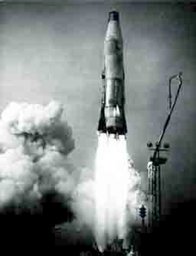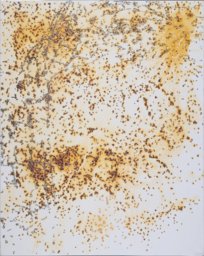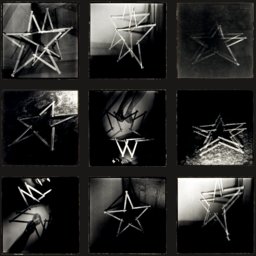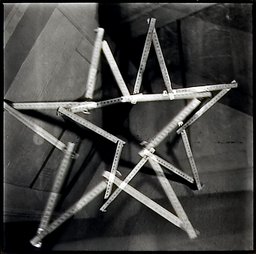Search
Showing Page 3 of 4, 118 results
Städel | Women
The Roederstein-Jughenn Archive domiciled in the Städel Museum since 2019 provides insights into a network of women around Roederstein who supported and encouraged one another in matters of training and exhibiting, while also providing each other practical help.
https://www.staedelmuseum.de/en/staedel-women
Images of Italy
The Städel Museum presented a selection of early photographs of Italy. The exhibition united altogether ninety major photos of the years 1850 to 1880 from the museum’s own collection.
https://www.staedelmuseum.de/en/images-of-italy
Art Education
Our museum-education programme also provides socially marginalized groups opportunities for learning and participation.With your support, you help us offer in-depth knowledge about our collection and special exhibitions to a broader public.
https://www.staedelmuseum.de/en/support/private-patron/art-education
Visual Worlds of Everyday Life
With photographs by Wolfgang Tillmans, Pietro Donzelli, Barbara Klemm, Nobuyoshi Araki and Jack Pierson, the cabinet presentation in the permanent exhibition of the Contemporary Art Collection showed an artistic perspective on everyday life. A wilted bouquet, power poles passing outside the car window, chance encounters with pedestrians on the street: it takes the artistic perspective on everyday life to reveal impressions as fleeting as they are unexpected. .
https://www.staedelmuseum.de/en/bilderwelten-aus-dem-alltag
Watteau
From 19 October 2016 to 15 January 2017, the Städel Museum presented a comprehensive exhibition on one of the most outstanding draughtsmen in the history of French art—Antoine Watteau (1684–1721).
https://www.staedelmuseum.de/en/watteau
Géricault to Toulouse-Lautrec
The works on display, numbering about ninety in all, represented highlights of this century and technique and provided insights into the superb holdings of the Städel’s Department of Prints and Drawings.
https://www.staedelmuseum.de/en/gericault-to-toulouse-lautrec

jpeg icbm02
Thomas Ruff
2007https://sammlung.staedelmuseum.de/en/work/jpeg-icbm02
Maria Sibylla Merian
“Maria Sibylla Merian and the Tradition of Flower Depiction” presented more than 150 works in all: sheets from the collections of the Städel and the Kupferstichkabinett, but also valuable loans from the Bibliothèque Nationale in Paris, the Sächsische Landes- und Universitätsbibliothek in Dresden, the Staatsbibliothek zu Berlin and the Universitätsbibliothek Johann Christian Senckenberg in Frankfurt.
https://www.staedelmuseum.de/en/maria-sibylla-merian
Ursula Schulz-Dornburg
Assembling more than 200 works from 1980 to 2012, the Städel Museum offered the first comprehensive survey of the work of Düsseldorf based photographer Ursula Schulz-Dornburg.
https://www.staedelmuseum.de/en/ursula-schulz-dornburg
Fantasy and Passion
The Städel Museum showed 90 remarkable Italian Baroque drawings from its own collection, inviting visitors to an intimate encounter with the artistic drawings of a bygone era. In their drawings, the artists not only laid the foundations for their paintings, sculptures or prints, but also demonstrated the independence of the medium.
https://www.staedelmuseum.de/en/fantasie-und-leidenschaft
Battle of the Sexes
The show drew from the Städel Museum holdings which—with paintings by Max Liebermann, Edvard Munch and Franz von Stuck, sculptures by Auguste Rodin and photographs by Frank Eugene, Man Ray and others—include important works on the subject.
https://www.staedelmuseum.de/en/battle-of-the-sexes
New Ways of Seeing
In an introduction and seven theme-oriented sections, the exhibition “New Ways of Seeing: The Photography of the 1920s and ’30s” conveyed an impression of the medium’s various uses in the interwar period.
https://www.staedelmuseum.de/en/new-ways-of-seeing
Victor Vasarely
The exhibition also looked back at Vasarely’s beginnings as an artist with such works as “Hommage au carré” (1929) or figurative paintings like “Autoportrait” (1944).
https://www.staedelmuseum.de/en/victor-vasarely
The 80s
Works by such artists as Ina Barfuss, Werner Büttner, Walter Dahn, Jiří Georg Dokoupil, Rainer Fetting, Georg Herold, Martin Kippenberger, Helmut Middendorf, Christa Näher, Albert Oehlen, Salomé and Andreas Schulze were on view.
https://www.staedelmuseum.de/en/the-80s
Maniera
Pontormo, Bronzino, Andrea del Sarto, Rosso, Vasari—in 2016, the Städel Museum had stage a major exhibition of superb works presenting the distinguished painters of Florentine Mannerism for the first time in Germany.
https://www.staedelmuseum.de/en/maniera
Städel’s Beckmann. Beckmann’s Städel
One of the artist’s most well-known and most important works, the “Self-Portrait with Champagne Glass (1919)”, has been secured for the Städel in 2021.
https://www.staedelmuseum.de/en/staedels-beckmannbeckmanns-staedel
Titian and the Renaissance in Venice
The Frankfurt show assembled more than twenty examples by Titian alone – and thus the most extensive selection of his works ever before on display in Germany.
https://www.staedelmuseum.de/en/titian-and-the-renaissance-in-venice
Masterworks in DIalogue
A show that has been conceived by all the Städel’s curators together confronted key works of the institution’s own holdings with masterpieces from the most renowned museums over the world.
https://www.staedelmuseum.de/en/masterworks-in-dialogue
Matisse – Bonnard
A particular highlight of the exhibition were the two paintings the artists owned by one another, which were shown together for the first time. Another highlight was Matisse’s “Large Reclining Nude” of 1935—a key work which has not been on display in Germany for more than thirty years and which has been on loan from the Baltimore Museum of Art.
https://www.staedelmuseum.de/en/matisse-bonnard
Marc Brandenburg
Approximately 130 drawings and one video work were shown in a site-specific installation: Shrouded in black light, Brandenburg’s drawings, inverted into the negative, are reminiscent of a visual diary of thoughts, memories, and sensory impressions from the last thirty years.
https://www.staedelmuseum.de/en/marc-brandenburg
Back to the Present
Starting from the central space of the Garden Halls and beginning with major works by the younger and youngest generation of contemporary artists, a history of art after 1945 are unfolded.
https://www.staedelmuseum.de/en/back-to-the-present
Innovation and Expansion
To the Städel Museum as a private civic foundation, these measures pose a financial challenge we would like to tackle with our long-term partners and sponsors.We’d be delighted to come to you with our project proposals so that we can link your foundation purposes with our aims and together develop concepts for the future of our cultural institutions.
https://www.staedelmuseum.de/en/support/foundations/innovation-and-expansion
Self. Determined.
The exhibition accordingly built on the Städel Museum collection which, meanwhile comprising 28 works by the artist, represents one of the most important Roederstein holdings apart from those of the Stadtmuseum Hofheim am Taunus and the Kunsthaus Zürich.
https://www.staedelmuseum.de/en/self-determined
Holbein
Exhibition viewPhoto: Städel Museum - Norbert Miguletz Exhibition viewPhoto: Städel Museum - Norbert Miguletz Exhibition viewPhoto: Städel Museum - Norbert Miguletz
https://www.staedelmuseum.de/en/holbein
Research & Conservation
A selection of current projects from the fields of research and conservation and all the information you need for your own research at the Städel Museum.
https://www.staedelmuseum.de/en/the-staedel/research-conservation
Scenes of America
Gelatin silver print on baryta paper, 69,5 x 80 cmCollection DZ BANK at the Städel Museum, Frankfurt am Main© Andy Warhol/ The Andy Warhol Foundation for the Visual Arts, Inc./ Artists Rights Society (ARS), New York
https://www.staedelmuseum.de/en/scenes-of-america

Scarf without Arafat
Georg Herold
1990https://sammlung.staedelmuseum.de/en/work/schal-ohne-arafat
Art History Online
Experience “Art History Online – The Städel Course on Modern Art” – at no cost and exactly when it suits you. Learn about art history and visual studies in a richly varied way as you proceed through the five modules of the course on your computer or tablet at your own pace.
https://www.staedelmuseum.de/en/digital/art-history-online

Foot rule stars
Sigmar Polke
1968https://sammlung.staedelmuseum.de/en/work/zollstocksterne

Foot rule stars
Sigmar Polke
1968https://sammlung.staedelmuseum.de/en/work/zollstocksterne-1